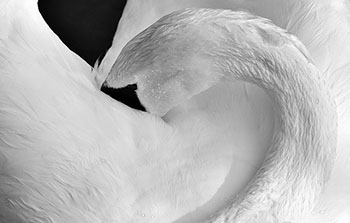Conference held by Jaya Yogācārya on Nov. 22nd, 2019 during meditation class
During the past conferences, we have worked on understanding the complex mechanisms enabling the awakening of Kuṇḍalinī कुण्डलिनी.
This potential and dormant energy at the base of the spine can be approached in different manners by yogis.
Some of them will use Haṭhayoga हठयोग techniques with sustained effort, unbreakable will, postural work, breath control through Prāṇāyama प्राणायम, the arresting of seminal discharge, the so-called "rod" techniques, and the whole approach of the physical and energetic dimension.
Other practices will be more inner practices. However, they will involve the very powerful spiritual energies of speech, breath, thought, vibratory processes, Praṇava प्रणव (Oṃ ओं), Nāda नाद (sound), Sanskrit phonemes, and various other manifestations of the cosmic power.
So, in order to make Kuṇḍalinī rise, it is necessary to penetrate the median way, that is Suṣumṇā nāḍi सुषुम्णा नाडि.

Yogis can do this by different means, but the general process is the following:
– start with the destruction of dualist thoughts,
– suspend the inspired and expired breaths (Kumbhaka कुम्भक),
– access to the initial and final extremities of the nāḍi नाडि,
– retract the energy into the Self (the absolute),
which will enable the final fusion with the universe.
Dual thought destruction seems to be the essential starting condition for any awakening work.
It is called Vikalpa Kṣaya विकल्प क्षय.
Vikalpa विकल्प is indirect knowledge based on words, speech, conceptualization or imagination and not based on direct experimentation.
In the Yoga Sūtra of Patañjali, vikalpa is one of the five Vṛtti वृत्ति, or mental modifications.
The four other ones are:
– Pramāṇa प्रमाण, direct knowledge derived from intellect and sense experience, but subject to illusion,
– Viparyaya विपर्यय, wrong knowledge or mistaken conception,
– Nidrā निद्रा, sleep,
– Smṛti स्मृति, memory.
To come back to Vikalpa Kṣaya, the yogi must concentrate on the heart and prevent vikalpa, imagination, from arising.
Constraining the mind to the condition of Avikalpa (absence of duality) and considering the Self (the absolute) as the sole and real experience, he develops the consciousness of the central reality of his entire being, on all planes, including the median way (Suṣumṇā nāḍi).
The meditating yogi enters the state of Turya तुर्य, the fourth state, putting an end to duality.
Here, we attain the high powers of meditative willpower and resorption processes, (Laya yoga लय योग).
Another strategy is the use of breaths to force the median way.
This strategy is accomplished through Prāṇa प्राण work.
Beyond its usual meaning of breath and vital energy, the word Prāṇa or Prāṇa Śakti प्राण शक्ति represents above all conscious universal energy, present both in the universe and in the human body.
From spatialized and unlimited, Prāṇa becomes limited when it fixes itself in the human inspired and expired breaths. Through the incarnation of human beings, Prāṇa becomes as unconscious and limited as the functions that depend on it: Sthūlaśārira स्थूलशारिर (body), Tanmātra तन्मात्र (five senses), Manas मनस् (mind), Buddhi बुद्धि (intellect).
However, despite this limitation, its nature is universal and cosmic.
In other words, breath energy is consciousness.
Man can only access a higher and subtle consciousness through the transcendental experience of energy in him.
The practitioner’s work will be to free Prāṇa again to make it subtle, not subject to the duality of intellect or breaths.
Since Prāṇa partakes of all of the tools of human life (intellectual, physical, sensory), gaining control over it is to gain control over all of these.
Prāṇāyama प्राणायम is hard and subtle work.
It can be intense when it consists in bringing Iḍā इडा and Piṅgalā पिङ्गला forcefully back to Suṣumṇā.
It can also be done with a more meditative approach.
The natural movement of Prāṇa ends outside twelve fingers’ breadth from the nose for the exhaled breath and goes from the outside to the heart for the inhaled breath. During meditation, we have already worked on developing awareness of these two points of repose called Dvādaśānta.
We use them as Adhara अधर, physical and energetic supports to calm the mind down and experience energy.
To come back to the very inner approach of breaths, Kumbhaka कुम्भक techniques, that is retentions with concentrations on breaths simultaneously at their point of repose and their point of origin, enable to interiorize them, charge them and bring them back to Suṣumṇā. Breaths, not playing the game of inhaling and exhaling anymore under the constraint of Iḍā and Piṅgalā Nāḍi नाडि, stabilize at one point, neutralize each other and merge in the median way.
Other more powerful approaches of Kumbhaka like Prāṇāpāna प्राणापान, enable the fusion of prāṇa, by reversing Udāna Prāṇa उदान and Āpaṇa Prāṇa आपण to activate Samānā समाना and guide Kuṇḍalinī in its upward movement.
Kumbhaka, whether they are done forcefully with advanced Prāṇāyama or approached with subtle meditative concentrations observing the natural breath process, lead, from experience, to the knowledge of spontaneous retention of breath, which goes along with the experience of the void.

It is said: "If the energy in the form of breath can neither enter nor depart, when it blossoms in the center as free from duality, through it the absolute Essence is recovered. "
Other subtle kumbhaka can be practiced by uttering mentally or out loud certain phonemes.
Some of you have already practiced a certain number of these meditations. Remember the meditative practices where we approach Nāda नाद by concentrating on Anāhata अनाहत and on the initial instant during the mental emission of the Sanskrit vowel "A अ" followed by nothing, the "naked A".
If we make the exercise harder by demanding an emission without nasal resonance and breathing out, we go to the root of an experience of the absolute void.
Also, remember this meditative work on the Aḥ अः phoneme and on the final moment, fixing your mind on the Visarga विसर्ग process, illustrated by the two dots leading to this slight aspiration culminating in the void.
Here too, this work constrained by a kumbhaka will amplify the perception.
Also, other meditative exercises can be done by uttering internally a Sanskrit vowel-less consonant, while concentrating on the heart. The associated retention will bring about mind modifications, the stilling of thought, putting an end to the mechanism of duality.
Only infinite knowledge, carried by the absolute sound, remains.
To come back to the word Dvādaśānta द्वादशान्त, it also means "support", Ādhāra आधार and is one of the sixteen supports for concentration.
These Ādhāra are called so because they "support" or "localize" the self and are generally identified as places where breath can be maintained.
So, there are the two Dvādaśānta I described previously, in relation to the nose and the heart. But in more esoteric yoga, Śaiva शैव yoga, (yoga of the god Śiva शिव) the location of these Dvādaśānta will depend on Brahmarandhra ब्रह्मरन्ध्र.
So, still in the limit of twelve fingers’ breadth, there is nāsikya-dvādaśānta, below Brahmarandhra, at the root of the nose, which can be assimilated to Bhrūmadhya भ्रूमध्य, and śakti-dvādaśānta located at twelve fingers above the cranial opening, that is beyond Brahmarandhra.
Most advanced practices involve a subtle control of internal Prāṇāyama upward between these two spaces.
However, we always go back to this duality of inhaled and exhaled breaths the yogi has to merge into one.
The one who stands in the absolute void of the central axis transcends duality whose one pole is pain, and the other pleasure, but which entangles beings in adversity.

In Chāndogya-Upaniṣad छान्दोग्य उपनिषद्, it is said:
" The fire-bird builds its nest in the infinite space; it is ever dwelling in the middle–equally remote from earth and sky. Its trust has no support.
Hence its free soaring into the boundless void. "
Allegory of the fire rising in the absolute void of Suṣumṇā.
Allegory of the bird Haṃsa कलहंस soaring to places where ordinary men can’t go.
The moon of the cranial space (Brahmarandhra cakra, Candra चन्द्र cakra, hypothalamic system) distills the cool nectar when the fire of Kuṇḍalinī attains the void at the summit of its ascent. The absence of any vikalpa, that is any mental speculation, establishes itself.
The yogi does not feel hunger or thirst anymore and won’t be born again in this world.
Lallâ, poetess and Yoginī of the 14th century, writes about the breath and Kuṇḍalinī.
She says the following:
"With a rein did I hold back the steed of my thought.
By ardent practice did I bring together the vital airs of my ten nadis.
Therefore did the digit of the moon melt and descend unto me,
And a void became merged within the Void. "
Hari Om tat Sat
Jaya Yogācārya
Bibliography:
– "La puissance du serpent" ("The Serpent Power") by Arthur Avalon, Dervy Editions
– "La Kuṇḍalinī" by Lilian Silburn, Les Deux Océans Editions
– Adaptation and comment by Jaya Yogācārya
Translated by Stéphanie Bosco
©Centre Jaya de Yoga Vedanta La Réunion

